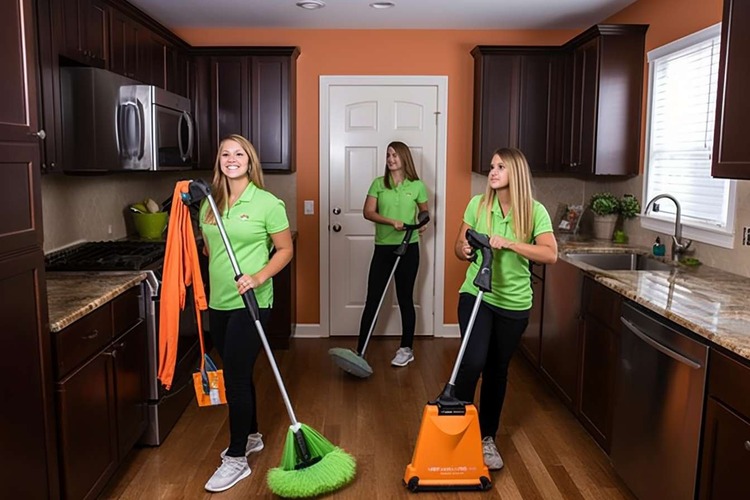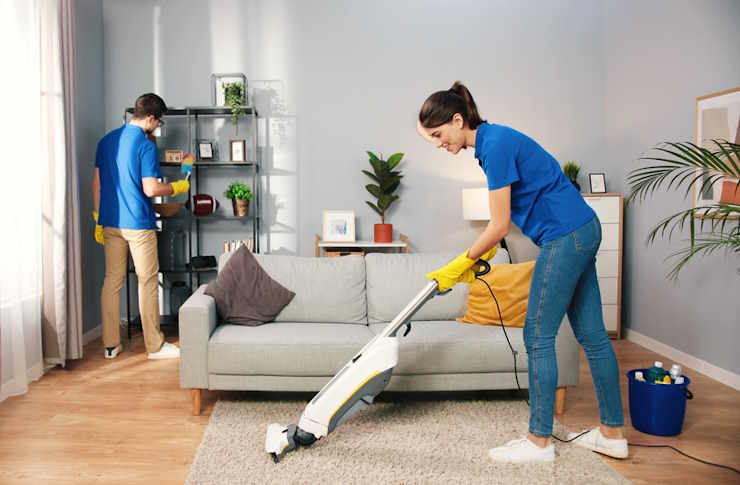Cleaning Services Guide: What to Expect and How to Choose
Finding the right cleaning services can save you time, reduce stress, and keep your living or working space consistently fresh. Whether you want a one-time deep clean or ongoing maintenance, understanding what’s included, how often to book, and how to prepare will help you get better results. This guide covers core service types, scheduling considerations, eco-friendly options, and practical ways to set expectations with local services in your area.

What do professional cleaners include?
Most professional cleaners offer a spectrum of options. Standard or “maintenance” cleaning usually covers routine tasks designed to keep high-traffic areas tidy. Deep cleaning focuses on buildup in places that are often skipped during quick spruce-ups. There are also specialized services such as move-in/move-out cleanings, post-construction cleanups, and commercial or office cleaning with tailored checklists.
Typical standard inclusions for homes:
-
Dusting accessible surfaces, shelves, and baseboards
-
Vacuuming carpets and rugs; sweeping and mopping hard floors
-
Wiping kitchen counters, appliance exteriors, and cabinet fronts
-
Cleaning sinks, mirrors, and bathroom fixtures
-
Emptying small trash bins
Deep cleaning often adds:
-
Inside oven and fridge (on request)
-
Detailed tile, grout, and baseboard scrubbing
-
Window sills, door frames, and light fixtures
-
Behind or under movable furniture
Ask for a written checklist so you know what’s included and what counts as an add-on.
How often should you book cleaning?
The right frequency depends on foot traffic, household size, pets, and your tolerance for mess. Weekly cleanings suit busy households or shared spaces that accumulate grime quickly. Biweekly is a popular balance for families and professionals who want consistent upkeep without daily chores taking over. Monthly cleanings can work if you handle light maintenance between visits or if your space stays relatively tidy.
Consider seasonality too. Allergy seasons, holidays, or home improvement projects can spike dust and debris, making a deep clean timely. Commercial spaces may need more frequent touchpoints, especially in high-contact areas like restrooms, kitchens, and shared desks. If you’re testing a new provider, start with a deep clean and then shift into a recurring schedule to maintain the baseline.
How does bulk_create_keyword apply here?
You might encounter the term bulk_create_keyword in marketing tools or templates when researching cleaning services online. It’s typically a placeholder used in SEO workflows, not a real-world search term customers use. When looking for local services in your area, use precise phrases instead, such as “recurring home cleaning,” “office cleaning services,” “post-renovation cleaning,” or “eco-friendly cleaning products.”
For businesses, replace placeholders like bulk_create_keyword with meaningful keywords that reflect what you offer—location, service type, and any specialties. For example: “biweekly apartment cleaning in [City],” “move-out cleaning for property managers,” or “green commercial cleaning.” This helps potential clients find you for the services they actually need.
Eco-friendly and safe methods
Eco-conscious cleaning has grown from a niche preference to a standard expectation in many markets. Many providers now offer green options that reduce harsh chemical exposure and lower environmental impact. Look for clear labeling on products and, when possible, third-party certifications that evaluate safety and sustainability. Microfiber tools, HEPA-filter vacuums, and low-VOC cleaners can meaningfully improve indoor air quality and reduce residue left on surfaces.
If you or someone in your space has sensitivities, share that information. Ask the provider about fragrance-free options, ingredient lists, and whether they can avoid specific allergens. For workplaces, eco-friendly choices can support employee comfort and align with corporate sustainability goals.
This article is for informational purposes only and should not be considered medical advice. Please consult a qualified healthcare professional for personalized guidance and treatment.
Prepare your space for a visit
A few small steps can help cleaners focus on high-impact tasks rather than navigating obstacles. Tidy surfaces by putting away papers, toys, and dishes so pros can clean efficiently. Secure pets and inform the team about any areas that are off-limits. If parking is tricky, share instructions in advance. Make note of your priorities—such as “extra attention to the shower grout” or “inside the oven this visit”—and confirm whether these requests are included or billed as add-ons.
For recurring services, keep a simple checklist of preferences and rotate special tasks (e.g., inside fridge one visit, inside oven the next). This spreads out deep-clean items without overwhelming a single appointment or your budget.
What to expect from local services
Quality providers communicate clearly and document expectations. During booking, you should receive:
-
A detailed checklist of what’s included
-
Time estimates based on home size or office square footage
-
Information about cleaning supplies (who provides them and what’s used)
-
Policies for cancellations, rescheduling, and satisfaction guarantees
On the day of service, a professional team arrives within an agreed window, follows the checklist, and alerts you to any issues such as stubborn stains or maintenance concerns. Afterward, many companies welcome feedback; consistency improves when you share what worked and what didn’t.
Final thoughts
Well-chosen cleaning services can make home life calmer and workplaces more productive. Understanding service types, booking frequency, eco options, and preparation steps helps you set clear expectations and get more value from each visit. Focus on transparent communication, written checklists, and providers who adapt to your priorities, and you’ll enjoy a cleaner space with less effort over the long term.






